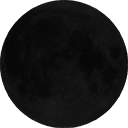The process I use is as follows:
If necessary, transfer the RAW (.CR2) image files from your laptop etc to the PC on which the images will be processed.
Stacking
- Open Deep Sky Stacker.
- Select the “Open Picture Files” option and select the raw light frames.
- Select the “Light Frame” boxes on the left of the file list.
- Select the “Open Dark Files” option and select the raw dark frames taken with the lens cap on.
- Select the “Dark Frame” boxes on the left of the file list.
- Select “Register Checked Pictures” and select to use the best 90% of frames. If a warning is generated saying that only a few frames have enough detected stars then go to the Advanced Tab, move the star count slider to the left, and repeat the registration selection.
- Select “Stacking Parameters”, “Light” tab, select “Median” stacking.
- Select the “Stack after Registering” tab and press “OK”
- A window labelled “Stacking Steps” will be displayed. Scroll down and check that the total exposure times are sensible. If not, maybe you forgot to select some of the RAW frames.
- Select “OK” and wait for the process to complete.
- In the bottom window note the “Score” field. If some frames are much lower than others this could indicate that there was a problem during those exposures.
- Wait for the blocks of the image to complete – it its normal for it to be black and white.
- Select “Save picture to a file” and store the resultant file. I usually apend the filename with something like “_basic_stack” so that I don’t confuse it with files produced later.
Image Processing
I’ll keep this part short as there are many excellent resources online and in magazines to explain the process far better than I can.
I use Paint Shop Pro as it suits my needs, budget and limited abilities. Other tools such as Photoshop and MaxIM are often used.
Here we go:
- Open the basic stacked file (.TIFF) that was produced from Deep Sky Stacker.
- Select Adjust, Brightness and Contrast, Levels. You should see a graph with 3 triangular sliders on the horizontal axis (black, grey and white).
- Ensure that the Channel is set to RGB.
- Ensure that the “Preview on Image” button is selected. This allows you to see the impacts of changing the sliders on the main image, without pressing OK.
- If there is a gap between the black slider arrow at the bottom left of the graph and the start of the curve then move the slider to the right until it touches the leftmost part of the curve.
- If there is a gap between the white slider arrow at the bottom right of the graph and the end of the curve then move the slider to the left until it touches the rightmost part of the curve. If the curve on the graph extends to the end of the axis then leave the slider alone. Select OK.
- Select Adjust, Brightness and Contrast, Curves. Initially a straight line graph is displayed.
- Ensure that the Channel is set to RGB and that the “Preview on Image” button is selected.
- Use the mouse to drag the curve to produce something roughly like this:
- Save the curve profile. I call it “1st Curve”.
- Press OK to apply the Curve. The target object should become better defined on the image.
- Repeat the use of Levels for a 2nd time. This should darken the sky background slightly, improving contrast between the deep sky object and the sky.
- Select Curves again. Modify the points to make the curve slightly less pronounced, like this:
- Save the curve profile. I call it “2nd Curve”.
- Press OK to apply the Curve. As before the image you should emerge further from the darkness.
- Repeat the use of Levels for a 3rd and final time. Again, the aim is to ensure that the background “noise” is not spoiling the image.
- Select Curves again. Modify the points again to make the curve even less pronounced, like this:
- Save the curve profile. You’ve guessed that I call it “3rd Curve”.
- Press OK to apply the Curve.
- At this point you should see a recognisable deep sky object with a reasonably dark background. You might choose to use other PSP functions to tweak the final result. This part of the task is aesthetic and subjective, but it might include use of the following functions:
- High Pass Sharpen or Sharpen
- Brightness/Contrast
- Highlight/Midtone/Shadow
- Save the resultant image. Again I use a naming convention such as “M33 MM-YY PSP1” to identify this as my first attempt at producing an image from Paint Shop Pro.
- Feel proud! Alternatively put the object on the “try again” list.
No doubt more knowledgeable imagers could pull extra details from the murky stack of frames than I. But if I like the result, that’s all that matters!




